Temporal Variations in Tourism Activities at a Key Marine Protected Area in the Maldives (2010-2019)
2020
Samuel Cameron Matthews (MSc Marine Conservation - University of Plymouth)
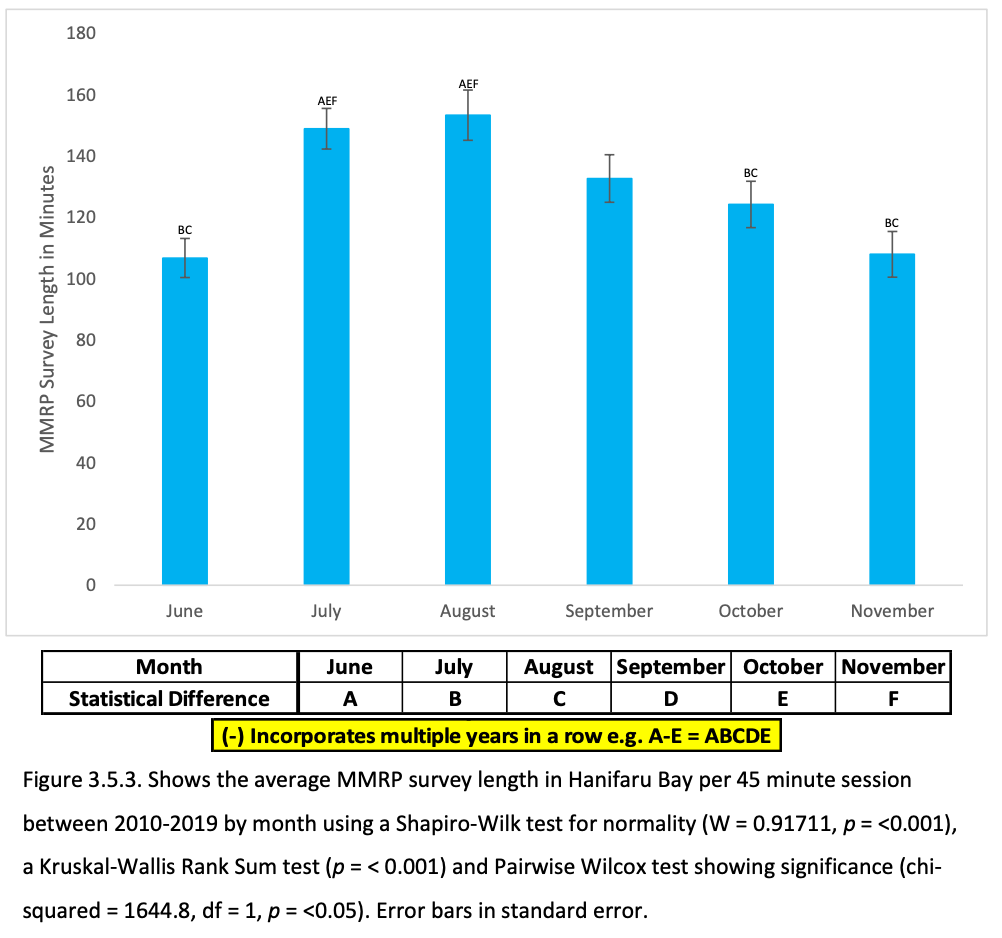

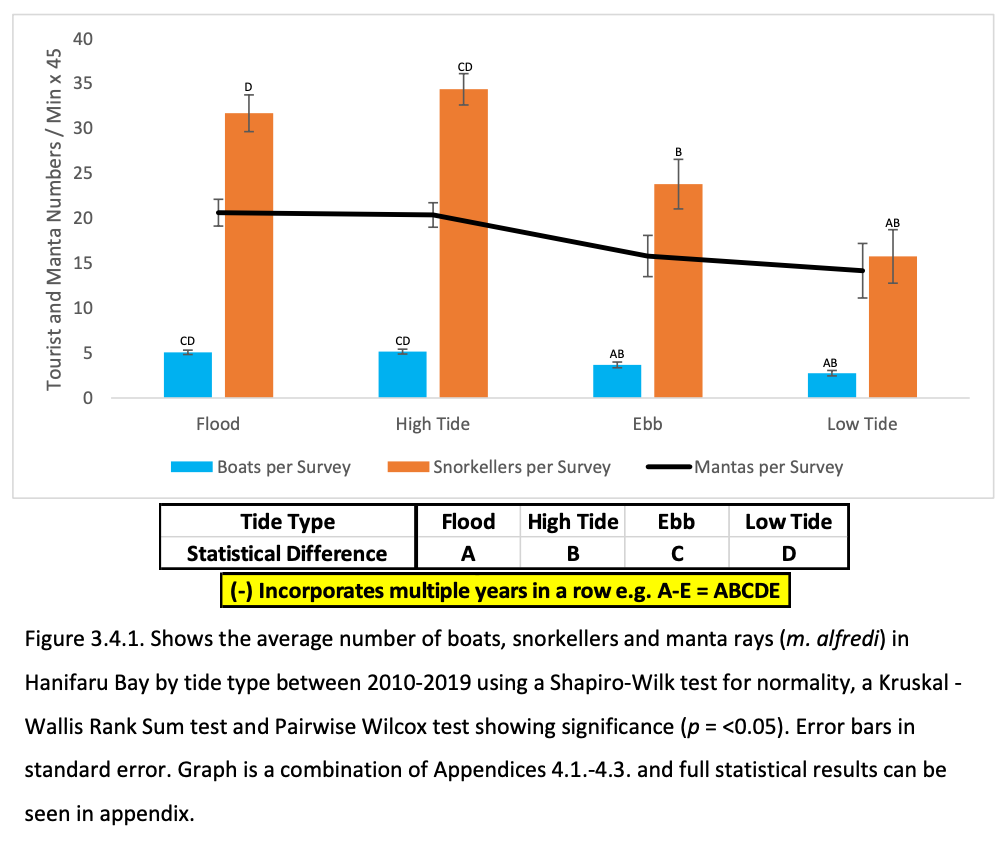

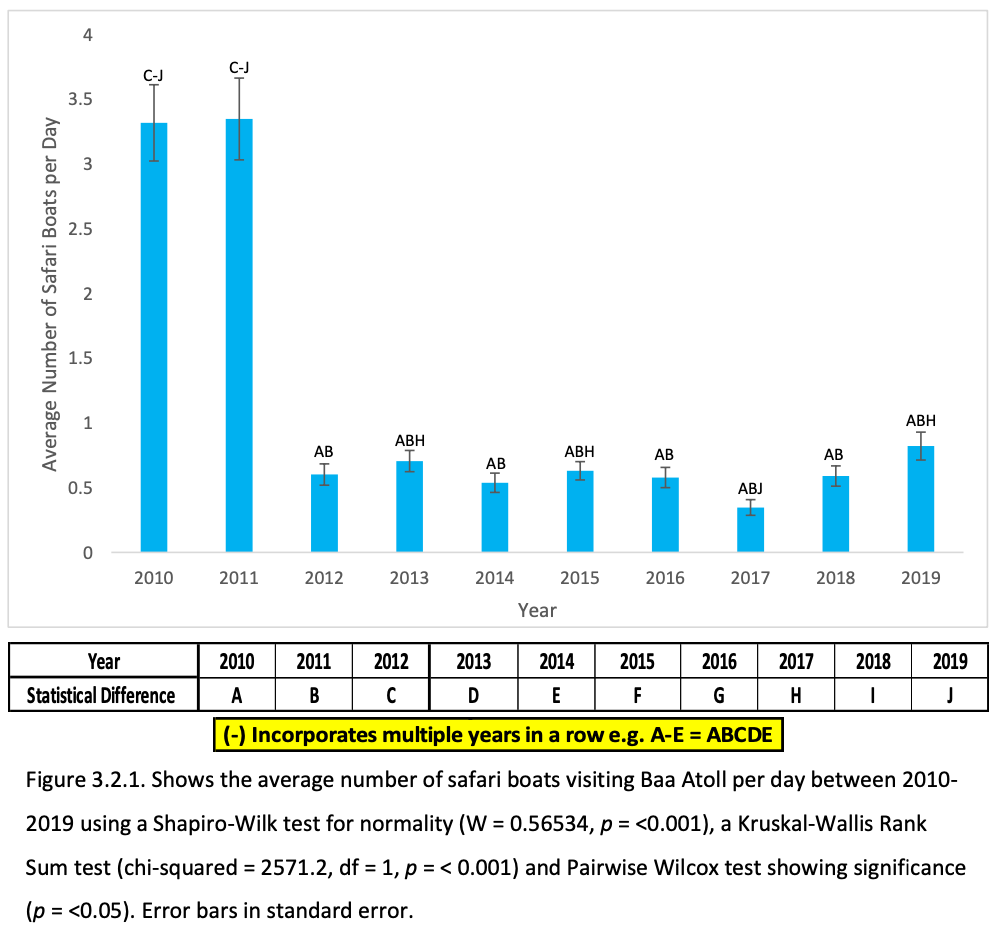
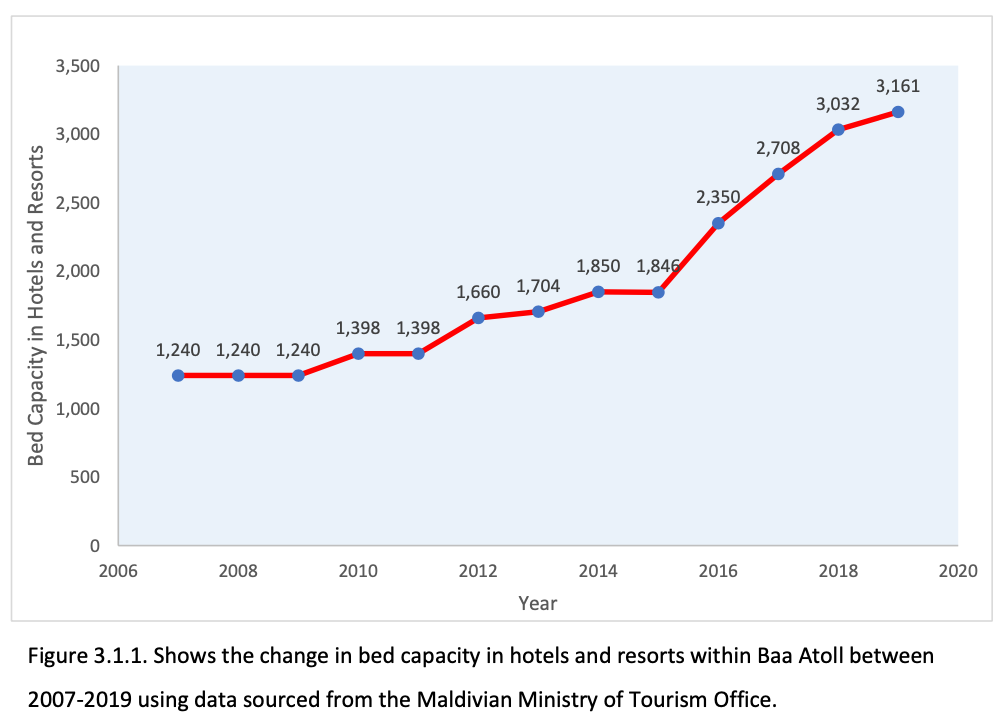
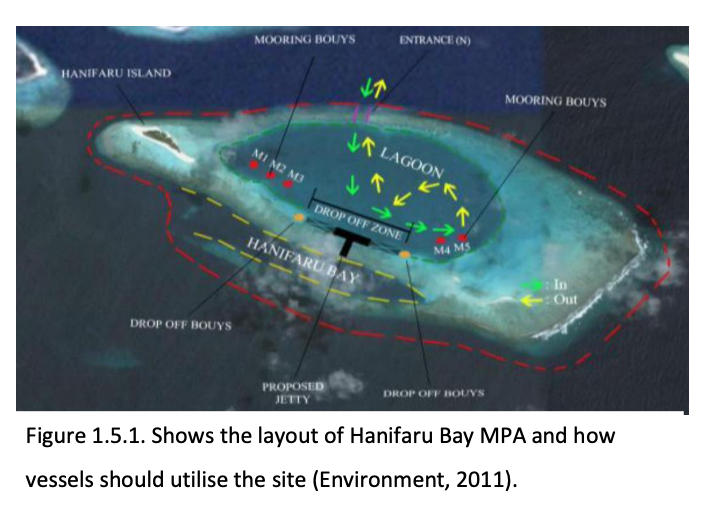
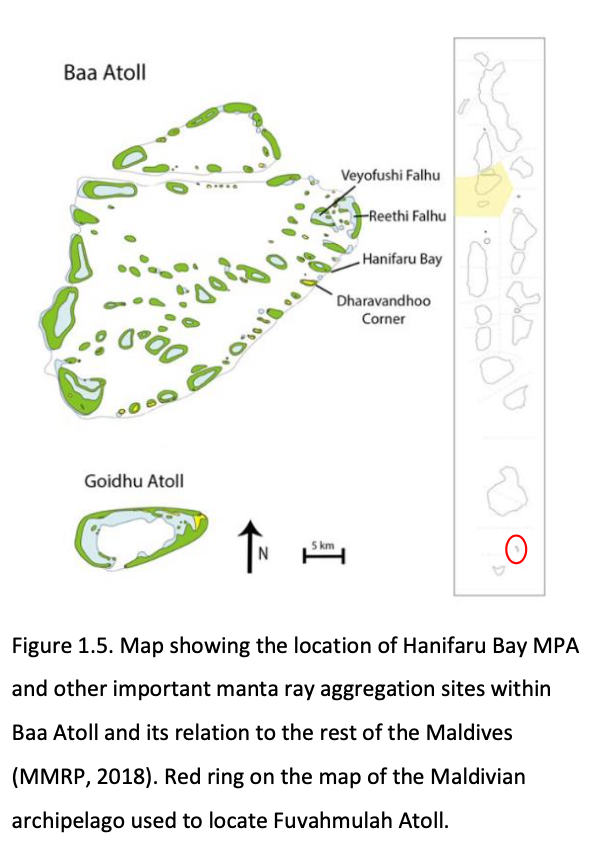
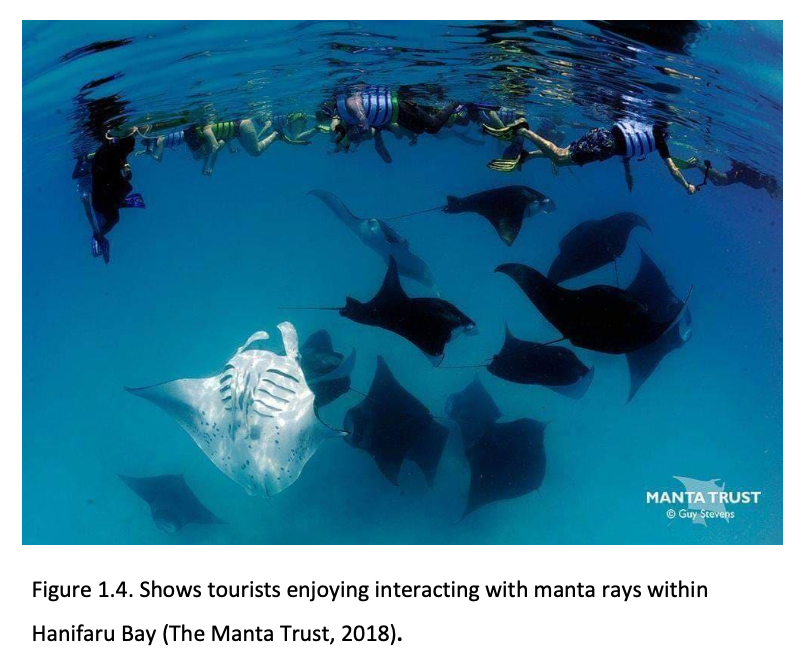
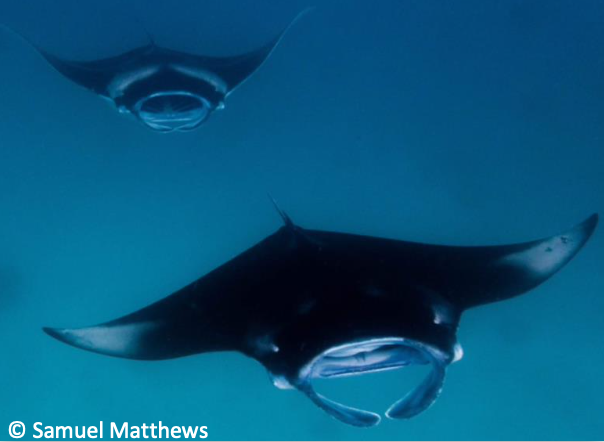
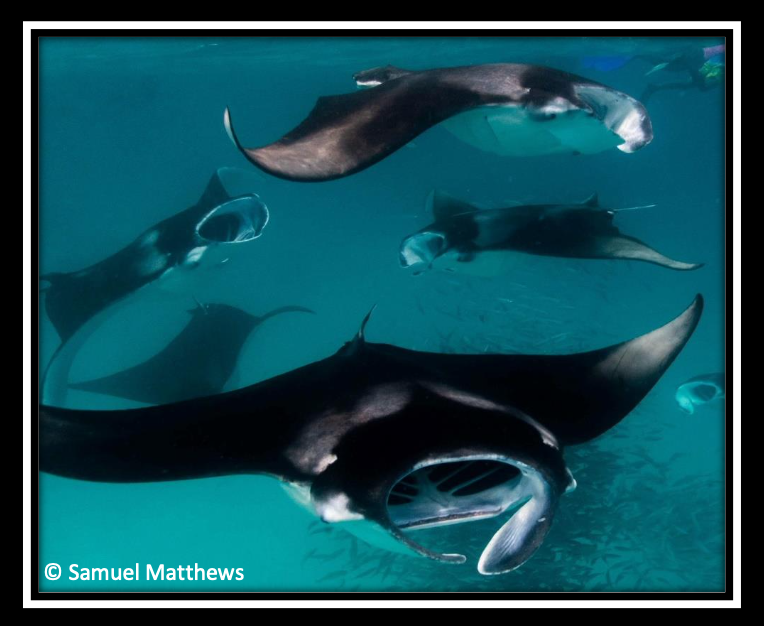
Summary: Tourism activities in Hanifaru Bay Marine Protected Area (MPA) and Baa Atoll UNESCO Biosphere Reserve have increased, necessitating an update to the Hanifaru Bay Management Plan. The plan, implemented between 2011-2012, initially reduced boat and snorkeler numbers. However, recent technological advancements and increased accommodation capacity have led to a surge in tourist activity, returning to pre-management levels in 2019. Peak tourist activity aligns with peak manta ray activity, suggesting increased ranger presence during these times. On-site monitoring, fines for rule-breaking, increased permit fees, and reduced guest numbers per guide are recommended to protect the megafauna and ensure compliance with regulations.
Abstract
“Tourism activities within Hanifaru Bay Marine Protected Area (MPA) and Baa Atoll UNESCO Biosphere Reserve have increased between 2010-2019 due to increased public awareness of manta ray tourism present in the region. The Hanifaru Bay Management Plan was introduced by the Maldivian Ministry for the Environment and UNESCO between 2011-2012 and was shown to be effective in managing tourism activity between 2011-2017 with a clear reduction in both boat and snorkeller numbers present when compared to pre Management Plan levels (2010) (Environment, 2011). However, advancements in technology use within the bay and changes in accommodation capacity within Baa Atoll has seen a dramatic increase in tourism activity inside Hanifaru Bay. The 2019 season had tourist numbers return to pre-Management Plan levels as seen in 2010. These recent changes in tourist activity in Hanifaru Bay suggests the Hanifaru Bay Management Plan requires updating to cope with this increased tourist pressure.
Peak tourist activity within Hanifaru Bay was shown to occur between July to September, on flood and high tides as well as full and new moons and all correlated closely with peak manta ray activity in the bay (MMRP, 2014). To protect megafauna utilising Hanifaru Bay MPA it is recommended that ranger presence is increased during these peak times of tourist activity. Increased on site monitoring of visitor permits and snorkeller numbers by rangers should take place alongside on the spot fines to any operators breaking site rules, allowing increased enforcement and adherence to current site rules. During peak times, permit fees should be increased to discourage large numbers visiting the site and increase funding for rangers to implement more stringent on site regulations and it is recommended that tour operators voluntarily reduce guest numbers from 10 to 5 per guide to increase in water codes of conduct compliance of guests.”
Author Affiliations
University of Plymouth
The Manta Trust
